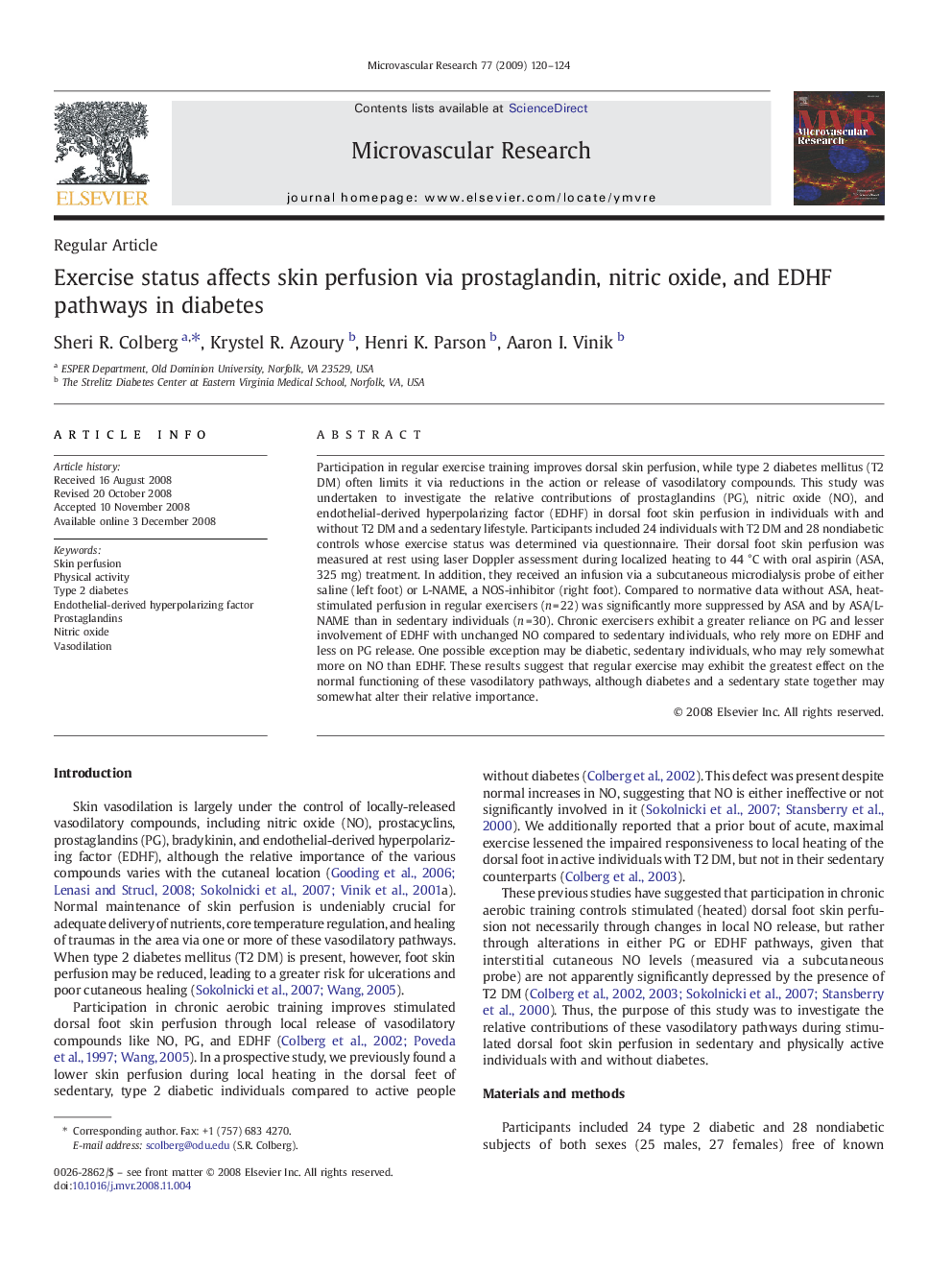| Article ID | Journal | Published Year | Pages | File Type |
|---|---|---|---|---|
| 1995230 | Microvascular Research | 2009 | 5 Pages |
Participation in regular exercise training improves dorsal skin perfusion, while type 2 diabetes mellitus (T2 DM) often limits it via reductions in the action or release of vasodilatory compounds. This study was undertaken to investigate the relative contributions of prostaglandins (PG), nitric oxide (NO), and endothelial-derived hyperpolarizing factor (EDHF) in dorsal foot skin perfusion in individuals with and without T2 DM and a sedentary lifestyle. Participants included 24 individuals with T2 DM and 28 nondiabetic controls whose exercise status was determined via questionnaire. Their dorsal foot skin perfusion was measured at rest using laser Doppler assessment during localized heating to 44 °C with oral aspirin (ASA, 325 mg) treatment. In addition, they received an infusion via a subcutaneous microdialysis probe of either saline (left foot) or L-NAME, a NOS-inhibitor (right foot). Compared to normative data without ASA, heat-stimulated perfusion in regular exercisers (n = 22) was significantly more suppressed by ASA and by ASA/L-NAME than in sedentary individuals (n = 30). Chronic exercisers exhibit a greater reliance on PG and lesser involvement of EDHF with unchanged NO compared to sedentary individuals, who rely more on EDHF and less on PG release. One possible exception may be diabetic, sedentary individuals, who may rely somewhat more on NO than EDHF. These results suggest that regular exercise may exhibit the greatest effect on the normal functioning of these vasodilatory pathways, although diabetes and a sedentary state together may somewhat alter their relative importance.
